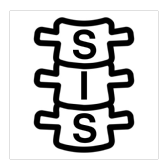SIS

Key information
Title:
SIS: Randomised controlled trial of the clinical and cost-effectiveness of cervical spine immobilisation following blunt trauma
Chief Investigator: Prof Mark Wilson
Sponsor: Imperial College London
Funder: National Institute for Health and Care Research
Registration Number: ISRCTN13721611
Summary:
Background and study aims
Cervical spine (c-spine) injuries often occur as a result of road traffic crashes, sports injuries or as a result of falling in frail people. Although c-spine injuries are rare, if they do occur, they can have a dramatic effect on an individual's quality of life and can lead to long-term disability or even death. In the UK, when potential c-spine injury occurs, the ambulance paramedics will usually stabilise the spine in one of two ways. Either, they will place the patient on a rigid board or mattress and strap across their forehead using tape supported by blocks and/or a hard neck collar. this reduces any movement, to prevent more damage to the spine during transfer to the hospital. This is known as triple spinal immobilisation. There is some concern that this can harm more than it helps patients. For example causing difficulty in breathing, skin or brain injury or in some rare instances making a spinal injury worse. Or, they will alter this slightly to introduce some flexibility, so that the patient is more comfortable and there may be fewer side effects. This is called movement minimisation. Currently, both of these immobilisation methods are used in the UK as normal practice, and patients can be given either method when their spine needs stabilising, but we don't know if movement minimisation will worsen spinal problems (such as paralysis) or improve potential complications of triple immobilisation such as breathing in vomit (aspiration), skin problems and brain injury. In this situation it is common to do a clinical trial.
Sample size:
Primary outcome:
Duration:
Enquiries:
EMAIL: sis at warwick dot ac dot uk

